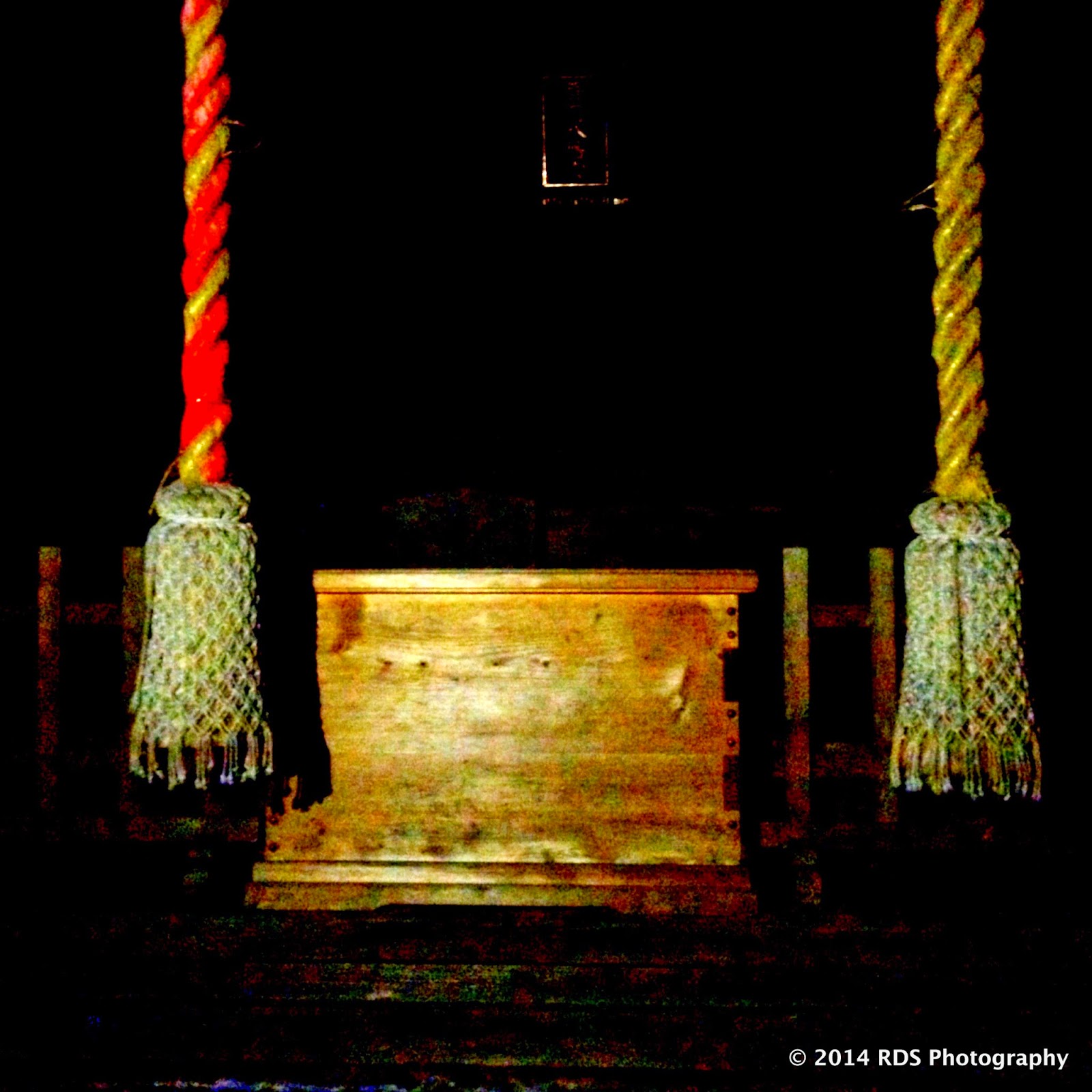Visited this shrine while taking Dale on her evening walk.
Main torii gate to Maioka Hachimang Shrine
Second torii gate just before the shrine.
The guardian lion-dogs guarding the God and the Shrine from misfortune.
The guardian lion-dogs guarding the God and the Shrine from misfortune.
The guardian lion-dogs guarding the God and the Shrine from misfortune.
The guardian lion-dogs guarding the God and the Shrine from misfortune.
Offertory box where you toss coins prior to offering your pray of thanks. Also, the heavy ropes for ringing bells to announce your presence to the deity.
Heavy ropes attached to bells. A thin rope with white streams of special paper indicating that this is a holy place.
Entrance to the main worship hall with the name of the shrine in Japanese kanji characters.
Inscription on the stone of the water basin near the shrine.
The water basin and dippers that are used to cleanse your hands prior to approaching the shrine.
The water basin and dippers that are used to cleanse your hands prior to approaching the shrine.
The water seems to be coming from a well and instead of modern plumbing, they are using hollowed-out bamboo for piping.
The water seems to be coming from a well and instead of modern plumbing, they are using hollowed-out bamboo for piping.
A small creek running past the shrine used to water the local rice paddies.
Small waterfall flowing over large rocks placed in the creek to make the water splashing sound.
Signs indicating the different access points to Maioka Park & Natural Wildlife Preserve.
On the way back home, came across a Buddhist site where these small statutes of deities where red caps and bibs to bless and watch over the loss of child.
Dale posing at the park. She had fun running loose after the park was closed (we snuck in illegally).
Always panting and slobbering! :-)
My neighbor had this strange flower blooming in the front yard near the sidewalk.
Pix4Japan by R.D.S. is licensed under a Creative Commons Attribution-NonCommercial-NoDerivatives 4.0 International License.






















































